
Happy Valentine's Day, tomorrow, to all the "young at heart" lovers of the world. I said "young at heart" so that no one would feel left out. Young, old, single, married, anyone with a pulse!
I actually think Valentine's Day is really for all the young lovers of the world who somehow feel like they have to show the person they love just how much they love them. And, I think it's become way too commercial. I just don't like being told I have to openly express my feelings towards the people I love on a certain day or buy them expensive gifts because someone has decided that we should.
For my husband and I, we prefer to think of every day that we have each other as Valentine's Day. Unconditional love, compliments, hugs, lingering kisses, thank-you's, "I Love You's!" for no reason, gentle caresses, smiles when you least expect it, words of encouragement, unexpected presents, help with the chores, impish looks, laughing with each other, loving glances, finishing each other's sentences, holding hands, counting on each other, loyalty, that glint in the eyes when you look at each other, and tender looks each and every day are a thousands times more meaningful than a card or a present or an elaborate holiday on Valentine's Day. That's us. Some of you may disagree.
When I was a child Valentine's Day was exciting because they always made it seem like a special event in school. You had to buy your little box of Valentine's and make one out for everyone in your class. Special ones had to be saved for special people like "Mommy" and "Daddy" and the rest of your family. You had to have your little candy hearts with the sayings and one went in with every Valentine's Day card. Sometimes special people got two. Then, we'd hand them out in school and you'd count how many you got. The "most popular" kids always got the most.
I never really thought too much about that until one year when there was a young girl in my class who was not well liked. That year she only got a few. Yes, one was from me as my Mother's rule was that everyone in the class gets one or no one gets one. From that day on it hit me that a public display like that could be very, very hurtful for some children. I had never thought about that before. I did that day. And, the effect has never left me. I can still see her crushed face and big, tearful eyes. Forty-five years later I don't remember her name but I remember her face and how devastated she was. If it had that effect on me I can't imagine what effect it had on her.
Maybe that has something to do with my attitude towards Valentine's Day. In any event, given that I love research - and readers of my
Linda's Blog know that I do - I thought I'd do a little research on the history of Valentine's Day.
From what I understand from the historychannel.com and Wikipedia.com the roots of Valentine's Day can be traced back to a Catholic Feast Day, in honor of Saint Valentine. As with so many other traditions it started with a pagan tradition. For 800 years before Valentine's Day was established the Romans had practiced a pagan celebration in mid-February commemorating young men's rites of passage to the god Lupercus.
During the festival the names of women were placed in an urn. The city's bachelors would then each choose a name out of the urn and then become paired for the year with that woman. Guys today might think that was pretty good deal. There were no strings attached but, the matches often ended in marriage. So, Pope Gelasius declared February 14Th, St. Valentine's Day around 498 A.D. However, the Roman pagan "lottery" system was deemed unchristian and outlawed by the Church. Instead of the names of young women, the box would contain the names of saints. Oh, boy. Can't you see the guys all lining up for that? Both men and women could draw from the box. The idea was to try and emulate the saint who's name they drew during the rest of the year. Needless to say the young Roman men weren't happy with this change. So, the Church decided that instead of Lupercus they needed a more suitable saint of love to take his place. Enter Antonio Banderas or, for me, Brad Pitt!
As the legend goes Valentine was a priest who served during the 3rd century in Rome. At the time, Rome was ruled by Emperor Claudius II. He was a ruthless ruler who involved Rome and its citizens in many bloody and unpopular wars. Emperor Claudius II was having a problem recruiting married men to his army and decided that all the single men made better soldiers than the men who were married and had families. So, he decided to outlaw marriage for young men. Can you imagine someone trying to do that today? In any event, Valentine thought that this was unfair and decided to defy the emperor and perform marriages in secret for young lovers. Of course, when Valentine was discovered he was put to death. He was stoned to death and then beheaded. He suffered martyrdom on the 14Th of February about 270 A.D.
Another legend has it that Valentine, while he was being imprisoned by Emperor Claudius II, sent the first "Valentine" greeting himself while he was in prison. It's believed he fell in love with the blind daughter of his jailer who visited him often. Valentines great love for her and his faith managed to miraculously heal her from her blindness before he was executed. Before his death he wrote her a letter and signed it "From Your Valentine."
After the lottery was banned Roman men still sought the affection of women (what a surprise). So, it became a tradition for the men to give the women they admired handwritten messages of love and affection containing Valentine's name.
The first Valentine card was sent in 1415 by Charles, Duke of Orleans to his wife while he was imprisoned in the Tower of London. Maybe there's something to being imprisoned that causes men to write valentines!
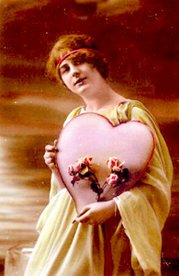
Valentine's Day didn't get imported into the U.S. until the 19Th century and was brought by British settlers. Most of the valentines back then were hand written. The 1st mass produced valentines were on embossed paper and were sold around 1847 by Esther Howland of Worcester, Massachusetts. Her father had a stationary store and she loved an English valentine she had received so she decided to create her own. She made her elaborate creations with real lace, ribbons, and colorful pictures known as "scrap." Kind of sounds like today's version of scrapbooking. The picture to the right is a Valentine's Day postcard, circa 1910.
During the second half of the 20Th century the giving of all manner of gifts was included with the valentines. Starting in the 1980's the diamond industry began to promote Valentine's Day as a day to give fine jewelry. What a surprise. And, if you'd like a statistic to support how commercial it's become - how about the fact that 1 BILLION valentine cards are sent each year. That makes Valentine's Day the second largest card sending holiday of the year. In comparison 2.6 billion cards are sent at Christmas. And, this may surprise you, 85 present of all valentines are purchased by women. Are they buying them for themselves I wonder? Hmm.... It started out with men giving them to women. Now is it women giving to men? If not men, then who?
So, is it too commercial? You do the math. One billion cards - that's a huge $$$$ making industry just in cards. Is it any wonder that the florists, the diamond industry, the restaurants, the hotel chains, etc. have all joined in. They want a piece of the action, too. Now, Valentines Day is not complete without the card, the flowers, the jewelry, the restaurant, and the romantic getaway. No wonder I think it's way too commercial.
So, for all of you who are in love with the idea of Valentine's Day I wish you a "Happy Valentine's Day!" For those of you who are still young at heart I leave you with a few Valentine's Day riddles:
What did the stamp say to the envelope? Stick with me and we'll go places.
What happens when you fall in love with a French chef? You get buttered up.
Knock, knock. Who's there? Justin. Justin who? Justin time! Here's your valentine.
Knock, knock. Who's there? Oscar. Oscar who? Oscar if she likes me!
and, finally - What did the boy elephant say to the girl elephant on Valentine's Day? I love you a ton! I think I'll go tell my husband that one.
Happy Valentine's Day from Linda graphic above - Courtesy of
Snowdreamz.com
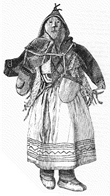


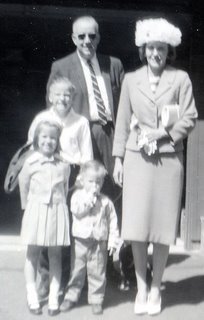 If you are a baby boomer, like I am, then you probably have many fond memories associated with dressing up in your finest attire (hopefully, new clothes) for Easter Day. I know that I do.
If you are a baby boomer, like I am, then you probably have many fond memories associated with dressing up in your finest attire (hopefully, new clothes) for Easter Day. I know that I do.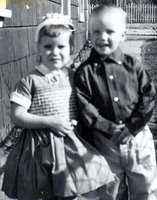
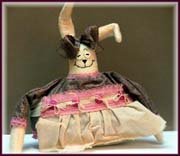 Who doesn't love cute, cuddly bunnies. Crafters and doll makers certainly do. When a crafter thinks of Easter or Spring they generally think bunnies and eggs. They've become a staple of Easter and Spring.
Who doesn't love cute, cuddly bunnies. Crafters and doll makers certainly do. When a crafter thinks of Easter or Spring they generally think bunnies and eggs. They've become a staple of Easter and Spring.
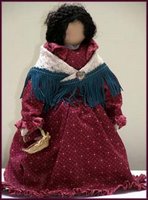

 Happy Valentine's Day, tomorrow, to all the "young at heart" lovers of the world. I said "young at heart" so that no one would feel left out. Young, old, single, married, anyone with a pulse!
Happy Valentine's Day, tomorrow, to all the "young at heart" lovers of the world. I said "young at heart" so that no one would feel left out. Young, old, single, married, anyone with a pulse! Valentine's Day didn't get imported into the U.S. until the 19Th century and was brought by British settlers. Most of the valentines back then were hand written. The 1st mass produced valentines were on embossed paper and were sold around 1847 by Esther Howland of Worcester, Massachusetts. Her father had a stationary store and she loved an English valentine she had received so she decided to create her own. She made her elaborate creations with real lace, ribbons, and colorful pictures known as "scrap." Kind of sounds like today's version of scrapbooking. The picture to the right is a Valentine's Day postcard, circa 1910.
Valentine's Day didn't get imported into the U.S. until the 19Th century and was brought by British settlers. Most of the valentines back then were hand written. The 1st mass produced valentines were on embossed paper and were sold around 1847 by Esther Howland of Worcester, Massachusetts. Her father had a stationary store and she loved an English valentine she had received so she decided to create her own. She made her elaborate creations with real lace, ribbons, and colorful pictures known as "scrap." Kind of sounds like today's version of scrapbooking. The picture to the right is a Valentine's Day postcard, circa 1910.